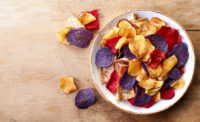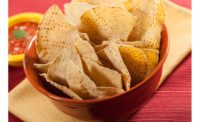Clean-Label Sweeteners for Snacks, Baked Goods
Today, a wide range of sweeteners suited to snacks and baked goods has arisen to compete for a spot in formulations

There is no denying the power of a sweet snack or baked good. The very nature of sweet foods implies instant energy and gratification from a momentary “sugar rush.”
However, today’s consumer demands more of their snack food. They’re looking for healthy, energy-sustaining and—yes—delicious, snack and bakery choices, sometimes to even replace a regular meal. These needs don’t necessarily leave out the use of cane sugar, but this pure sweetener comes with challenges of its own, including periodic price fluctuations.
Enter high-fructose corn syrup (HFCS), an inexpensive, easy-to-produce and highly functional sweetener. HFCS did great things for manufacturers, but eventually came under scrutiny due to the rise of obesity in this country and around the world—and the discovery by consumers that HFCS was so widely used in such a wide range of foods.
For these reasons and more, select groups of consumers have been quick to reject its use. These days, a wider range of sweeteners suited to snacks and baked goods—and suited to current perceptions of a “clean” label—has arisen to compete for a spot in formulations. As consumer needs change and developers scramble to meet those needs—and manufacturers look to control costs—ingredient manufacturers are racing to come up with sweet, clean and functional sweeteners to replace this old powerhouse sweetener. There are several excellent replacements from the plant world with easily recognizable names that step in to fill the void.
Zero-calorie sweeteners. A handful of naturally derived, zero-calorie sweeteners have hit the market that can bring the sweetness of sugar to snack and bakery applications—but without the calories. Stevia is a primary candidate, with suppliers offering ingredients capable of partial or complete replacement of caloric sweeteners. Another is luo han guo, also known as monk fruit, with an extract that is around 300 times sweeter than sugar.
Grain-based sweeteners. Grain-based sweeteners, like those derived from tapioca, rice, oats and barley, have proven very successful at replacing HFCS. Tapioca shares some functionality with HFCS, as its dextrose equivalent (DE) ranges from 20 to 90. Lower-DE syrups are less sweet but more viscous and act as binding agents in foods like trail mixes, granola and snack bars. Higher-DE tapioca syrup is sweeter and less viscous and, at higher use levels, can be used as a replacement for HFCS in most snack foods. Other grain-based syrups derived from rice, wheat, oats and barley have similar DE ranges to tapioca, though in some cases, distinct flavors can pose challenges in some applications. Still, in some foods like many types of baked goods, a barley malt syrup can improve color, flavor and shelf life.
Fruit-based sweeteners. Fruits, too, can lend sweetness where a developer prefers not to use sucrose or HFCS. Concentrates, syrups, pastes, purées from fruits like apples, prunes, raisins and pineapples can also add nutritional value to formulas. Plant phytonutrients from fruit products help with shelf life, as well as contributing sugary notes. The FDA also adds another appealing benefit for manufacturers using fruit products as sweeteners in the form of a more-appealing label. The new FDA label laws require displaying any added sugars on the nutrition facts panel. However, if a manufacturer uses certain types of fruit products as a sweetener—particularly pastes and purées made from 100 percent fruit, with a sugar level that’s not in excess of what would be expected from an ingredient made from 100 percent fruit—the laws might not require these products to be listed as added sugars.
Honey. Honey, possibly our most ancient of sweeteners, is another option. With a DE similar to that of HFCS, it lends not only sweetness, but unique color and flavor, to foods—from the light citrus flavor from orange blossom honey to the bold notes from buckwheat honey. Of course, snack and bakery producers looking to capture a specific color and flavor from their honey can work with suppliers to develop a customized blend.
Looking for a reprint of this article?
From high-res PDFs to custom plaques, order your copy today!







